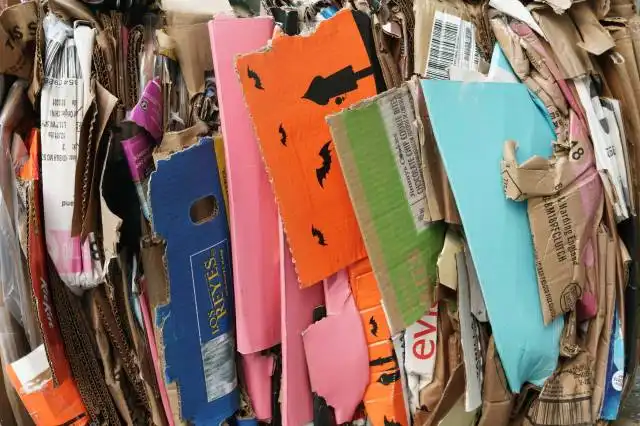Start a Litter Removal Business
Harnessing the Power of Cleanliness: Profiting from a Litter Removal Business
| Updated


LITTER REMOVAL BUSINESS
Dive into the business world with your shiny shovel and trash bags, as you embark on a profitable journey of starting a Litter Removal Business. In this line of work, your primary task is to help clean the environment by removing unwanted trash from clients' properties, public parks, or even urban areas. Imagine being the superhero of cleanliness, not only do you rid the world of litter, but you also convert that less desirable job into remarkable profits. Remember, one man's trash is another man's treasure, and in this case, the treasure is a flourishing entrepreneurship opportunity.
Jump to Business Plan
RELATED BUSINESS IDEAS
Browse ALL Sustainability & Eco-Friendly Initiatives Business Ideas
Discover Your Perfect Domain
Unlock the door to your online success with our hand-picked selection of premium domain names. Whether you're starting a new venture or rebranding an existing one, the right domain can set the tone for your digital presence. Browse through our curated list, each with its unique potential to enhance your brand's visibility and credibility.
LITTER REMOVAL MINI BUSINESS PLAN
This a quick reality check to help you identify the strengths and weaknesses of your business concept before you dive in.
Expected Percent Margin:
- Gross Margin: 70-80%
- Net Profit Margin: 20-30%
Earnings Expectations:
- Daily Earnings: $150 - $300
- Weekly Earnings: $750 - $1,500
- Monthly Earnings: $3,000 - $6,000
- Annual Earnings: $36,000 - $72,000
Actions to Hit Those Numbers:
Equipment and Operational Costs:
- Initial Investment: At least $1,000-$2,000 for essential tools (rakes, trash bags, safety vests, gloves, truck, etc.)
- Operational Costs: Fuel and vehicle maintenance costs must be considered.
Marketing and Client Acquisition:
- Networking: Build networks with property management companies, real estate agencies, and local businesses.
- Social Media Marketing: Make use of platforms like Facebook, Instagram, and Twitter to boost your visibility.
- Website Development: Develop a professional website to promote your services, show your work, and give contact information.
Recurring Contracts:
- Securing Contracts: Aim for long-term contracts with commercial properties, shopping centers, office complexes, etc. to ensure steady income.
Pricing Strategy:
- Competitive Pricing: Set competitive, yet profitable pricing points since the industry sees a lot of competition.
- Pricing Models: Consider flat fee, hourly rates, per-bag and per-site pricing models depending on the nature of the job.
Business Operations:
- Service Hours: Set flexible service hours to accommodate clients' needs; weekends and evenings may often be required.
- Employee Management: Hire a reliable and dedicated team; consider part-time workers or subcontractors for larger jobs.
These are generalized estimations and can vary depending on location, economic conditions, and individual business strategies. Always consult with a financial advisor for personalized advice.
NOT WHAT YOU HAD IN MIND? Here are more ideas



Browse ALL Sustainability & Eco-Friendly Initiatives Business Ideas
Grab Your Business Website Name
Before you get caught up in the whirlwind of setting up your business, invest in a domain name. It's a small but significant step that lays the foundation for your brand and makes it easier for customers to find and trust you. Just like you wouldn't build a house without securing the land first, don't build a business without securing your domain name.
"Why? Can't that wait?" Here's why it shouldn't
Step 1: Determine if the Business is Right for You
Starting a litter removal business can be a great way to make money and help the environment, but it is important to make sure it is the right business for you. Before getting started, you should do a thorough breakdown of the startup expenses and ongoing expenses associated with running a litter removal business. This will help you determine if the business is financially viable.
When doing a breakdown of startup expenses, you should consider the cost of equipment, such as bags, gloves, and litter pickers. You should also consider the cost of advertising and marketing materials, such as flyers, business cards, and website design. Additionally, you should factor in the cost of any necessary licenses or permits.
When doing a breakdown of ongoing expenses, you should consider the cost of supplies, such as bags and gloves. You should also consider the cost of insurance, as well as any fees associated with disposing of the collected litter. Additionally, you should factor in the cost of any necessary licenses or permits that may need to be renewed.
Examples of ways to make money with a litter removal business include charging a fee for services, offering discounts for bulk orders, and partnering with local businesses or organizations. Additionally, you could offer additional services, such as landscaping or pressure washing, to increase your income.
Step 2: Name the Business
Naming a business is an important step in the process of starting a litter removal business. It is important to choose a name that is memorable and reflects the services that the business provides. It is also important to make sure that the name is not already taken by another business. To ensure that the name is not taken, it is important to do a search of the United States Patent and Trademark Office database. Additionally, it is important to make sure that the name is not too similar to that of another business. This can help to avoid any potential legal issues.
When choosing a name, it is important to consider the target audience. For example, if the business is targeting a younger demographic, it may be beneficial to choose a name that is more modern and trendy. Additionally, it is important to consider the type of services that the business will provide. For example, if the business will be providing eco-friendly services, then it may be beneficial to choose a name that reflects this.
It is also important to consider the type of branding that the business will use. For example, if the business will be using a logo, then the name should be easy to incorporate into the logo. Additionally, it is important to consider the domain name. If the business will have a website, then it is important to make sure that the domain name is available.
Finally, it is important to make sure that the name is easy to pronounce and spell. This will make it easier for potential customers to remember the business’s name and find it online. Additionally, it is important to make sure that the name is not too long or complicated. This will help to ensure that potential customers can easily remember the business’s name.
Step 3: Register the Business
In order to register the business, you will need to decide on a business structure and register with the local government. Depending on the type of business structure you choose, you may need to register with the state or federal government as well. The most common business structures are sole proprietorship, partnership, limited liability company (LLC), and corporation. Each structure has its own advantages and disadvantages, so it is important to research and decide which one is best for you.
Once you have chosen the business structure, you will need to register the business with the local government. This will involve filing paperwork with the Secretary of State or other relevant government agency. You will also need to obtain any necessary licenses or permits required to operate the business. Additionally, you may need to register for taxes, such as sales tax or payroll taxes.
Cost of registration
The cost of registering the business will vary depending on the type of business structure you choose and the state or local government requirements. Generally, the cost of registering a business is relatively low, ranging from $50 to $500. However, additional costs may be incurred if you need to obtain licenses or permits. Additionally, you may need to pay for professional services such as legal or accounting services.
Benefits of registering the business
Registering the business is important for a number of reasons. It will give your business legitimacy and make it easier to open a business bank account. It will also help protect your personal assets from any liabilities incurred by the business. Additionally, registering the business will make it easier to apply for business loans or other forms of financing. Finally, registering the business will make it easier to pay taxes and comply with other government regulations.
Step 4: Obtain Necessary Licenses and Permits
In order to operate a litter removal business, it is important to obtain the necessary licenses and permits. Depending on the state and local regulations, the types of licenses and permits needed may vary. Generally, a business license, a waste management license, and a permit to transport waste are required. Additionally, a permit to operate a vehicle for business purposes may also be necessary. It is important to research the specific requirements for the area in which the business will be operating.
How to obtain licenses and permits
In order to obtain the necessary licenses and permits, it is important to contact the local government office responsible for issuing them. This may be the city or county clerk’s office, or the state department of environmental protection. The business owner should be prepared to provide information such as the business name, address, and contact information. Additionally, the business owner should be prepared to provide proof of insurance and any other documents that may be required. Once the paperwork is submitted, the business owner should receive the licenses and permits within a few weeks.
Cost of licenses and permits
The cost of licenses and permits can vary depending on the state and local regulations. Generally, the cost of a business license is relatively low. However, the cost of a waste management license and a permit to transport waste can be more expensive. Additionally, the cost of a permit to operate a vehicle for business purposes may also be necessary. It is important to research the specific costs for the area in which the business will be operating.
Step 5: Secure Necessary Equipment
The types of equipment needed to start a litter removal business will vary depending on the size of the business and the services offered. Generally, the most basic equipment needed includes a truck or van, litter collection bags, and tools for picking up litter. Depending on the size of the business, more specialized equipment may be needed, such as a trailer for larger loads, a leaf blower, and a pressure washer. It is important to research the types of equipment needed for the business and to determine which items are necessary and which can be rented or leased.
Cost of equipment
The cost of equipment for a litter removal business can range from a few hundred dollars to several thousand dollars. The cost of the equipment will depend on the type of equipment needed and the quality of the equipment. It is important to research the cost of the equipment and to compare prices from different suppliers. Additionally, it is important to factor in the cost of maintenance and repairs when calculating the cost of the equipment.
Sources of equipment
The sources of equipment for a litter removal business can include local hardware stores, online retailers, and specialized suppliers. It is important to research the different sources of equipment and to compare prices and quality. Additionally, it is important to consider the availability of parts and service when selecting a supplier.
Financing options
Financing options for a litter removal business can include traditional loans, lines of credit, and leasing options. It is important to research the different financing options and to compare the terms and conditions. Additionally, it is important to consider the cost of financing when selecting a financing option.
Step 6: Create a Business Plan
Creating a business plan is an important step in starting a litter removal business. A business plan is a written document that outlines the goals and objectives of the business, as well as how it will be managed and financed. It should include a market analysis, a description of the services offered, a financial plan, and a marketing plan. The plan should also include a budget for startup costs, a timeline for launching the business, and a plan for ongoing operations.
What to include in the business plan
When creating a business plan, it is important to include a detailed description of the services offered, a competitive analysis of the market, a financial plan, and a marketing plan. The financial plan should include a budget for startup costs, a timeline for launching the business, and a plan for ongoing operations. It should also include a breakdown of expected revenue and expenses, as well as a plan for financing the business. The marketing plan should include a description of the target market, a plan for reaching the target market, and a plan for pricing the services.
Step 7: Market the Business
The seventh step in starting a litter removal business is to market the business. There are many ways to market a business, and it is important to choose the best methods for the particular business. One way to market the business is to create a website and use social media to promote it. This will allow potential customers to easily find the business and learn more about the services it offers. Additionally, creating a blog or writing articles about the business can help to spread the word. Additionally, creating business cards and flyers to distribute in the local area can be effective. Finally, attending local events and networking with other businesses can be a great way to get the word out about the litter removal business.
Step 8: Set Up a Payment System
Examples of payment systems
The eighth step in starting a litter removal business is to set up a payment system. This will ensure that customers can easily pay for the services they receive. One way to do this is to set up an online payment system, such as PayPal or Stripe, which will allow customers to pay with their credit cards. Additionally, setting up a system to accept cash payments can also be beneficial. Finally, setting up an invoice system to bill customers on a regular basis can help to ensure that payments are received in a timely manner.
Step 9: Hire Employees
Examples of hiring employees
The ninth and final step in starting a litter removal business is to hire employees. This is an important step, as it will ensure that the business is able to provide quality services to its customers. When hiring employees, it is important to consider their experience and qualifications. Additionally, it is important to ensure that the employees have the necessary skills and knowledge to provide the services that the business offers. Additionally, it is important to provide training to ensure that the employees are up to date on the latest industry standards and practices. Finally, it is important to ensure that the employees are properly compensated for their work.
Step 8: Hire Employees
Hiring employees is a critical part of running a successful business. You will need to find people who are reliable and have the skills necessary to help you with your litter removal business. Start by creating a job description that outlines the duties and responsibilities of the position. Then, post the job on job boards, websites, and social media platforms. You can also reach out to local schools and universities to find potential employees.
How to train employees
Once you have hired employees, you will need to provide them with training. This should include a thorough overview of the company, the services you provide, and the safety protocols that must be followed. You should also provide hands-on training with the equipment and tools used for litter removal. Additionally, you should provide ongoing training and education to ensure that your employees are up to date on the latest safety protocols and industry standards.
How to retain employees
Retaining employees is essential for the success of your business. You should offer competitive wages, flexible hours, and a positive work environment. Additionally, you should provide incentives such as bonuses, rewards, and recognition for a job well done. You should also provide opportunities for employees to grow and develop within the company. Finally, you should ensure that your employees have access to the resources and support they need to do their job effectively.
Step 9: Track Expenses and Profits
Tracking expenses and profits is an important part of running a business. It is important to keep track of all expenses and profits so that you can make sure that you are staying within your budget and making a profit. There are several ways to track expenses and profits.
One way is to use a spreadsheet or accounting software to keep track of all income and expenses. This will allow you to easily see where your money is going and how much you are making. You can also use a budgeting app to help you keep track of your expenses and profits.
Another way to track expenses and profits is to use a bookkeeping system. This system will allow you to keep track of all your income and expenses and will help you to create financial statements that will show you how your business is doing.
You can also use a budgeting tool to help you track your expenses and profits. This tool will help you to create a budget and will help you to stay on track with your finances.
Finally, you can also use a financial advisor to help you track your expenses and profits. A financial advisor can help you to create a budget and will help you to make sure that you are staying within your budget and making a profit.
EXPLORE MORE CATEGORIES
Browse ALL Business Idea Categories
TAKE THE NEXT STEPS









